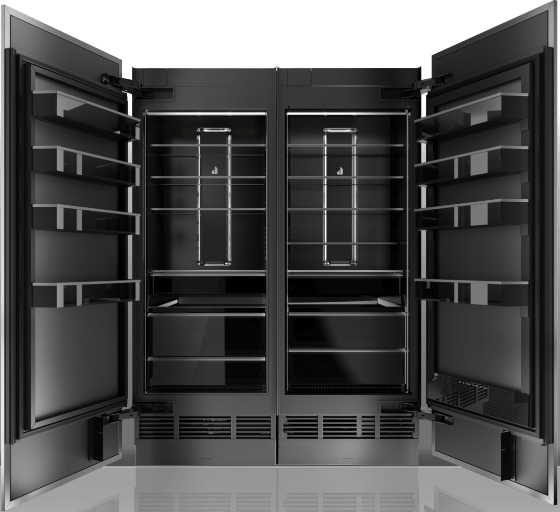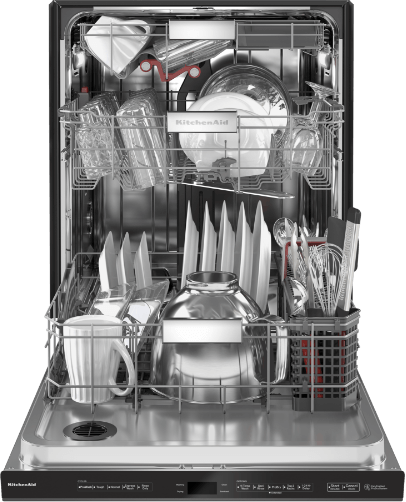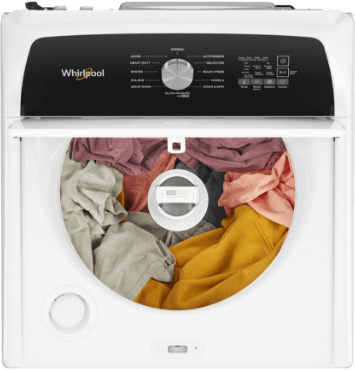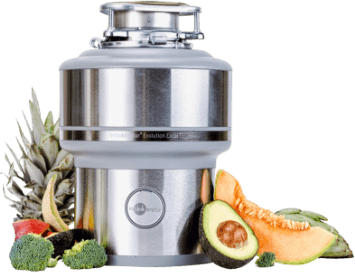| DfS Goals and Targets | 2023 Status |
|---|---|
| Continue to fully integrate sustainability requirements into the product design process. |
On track |
| Reduce emissions from our products in use (scope 3 category 11) by 20% by 2030, compared to a 2016 baseline. |
On track Reduced emissions from our products by ~7% in 2023 |
| Reach 95% reduction of high global warming potential (GWP) refrigerants and foams by 2023. |
Achieved |
Innovation and Design for Sustainability
When we design our products, we think deeply about the experience of our consumers and offer outstanding performance across multiple brands to meet the needs of a range of lifestyles. We also respect the finite nature of resources and strive to seize every possible opportunity to build sustainability into our products. By designing products with the needs of consumers and the planet in mind — which we call Design for Sustainability (DfS) — we can reduce our reliance on nonrenewable resources, lower our carbon and water footprint, and maintain our standards of excellence for quality and performance.

Whirlpool Corporation Products Improve Life at Home

Revolutionary Refrigerator
Insulation Technology
Materials innovation has been a critical component of product development to improve life at home for millions of consumers. This year, we unveiled SlimTech insulation, the first vacuum insulated structure technology in a refrigerator in North America (NAR). This represents a turning point in materials technology that improves refrigerator performance and increases circular design, thereby potentially reducing environmental impact. Implementation of SlimTech insulation unlocks consumer benefits, including:
Improved paths to product performance
- Can reduce refrigerator wall thickness by up to 66% to increase capacity by up to 25%
- In another configuration, increasing the thickness of SlimTech insulation walls allows a refrigerator to be up to 50% more energy efficient
- Can keep food fresh longer by reducing temperature swings from door openings by cooling up to 30% faster
- Enables more interior customization via metal interiors with cleaner angles and eliminates the need for traditional plastic interiors
- Quieter refrigeration due to fewer necessary compressor cycles to maintain cool temperatures
Potential increase to material sustainability
- Potential expanded refrigeration location options due to discrete refrigeration that could be contained within other pieces of furniture
- Material used in SlimTech insulation has the potential to be reused

Built with innovative features to improve performance for consumers
- The largest third rack available1 with exclusive rotating wash jets, wash everything at once, for maximum coverage and 30% more capacity2
- Wash it all with rotating spray tubes in the largest third rack1
- Among leading brands based on usable volume
- Compared to KitchenAid® Two-Rack Dishwashers
Use significantly less water and energy than hand washing
- Modern dishwashers use only 270 kWh and 3.5 gallons of water per cycle
- Save an average of 2,500+ gallons of water per year compared to hand washing
- Designed with efficiency in mind. Saving consumers water, energy and money with quality wash and dry performance3
- Compared to dishwashers meeting the minimum 2023 Department of Energy efficiency standards
Reduce daily operating costs of the home
- Innovations contribute to energy efficiency
- Lengthen product lifespan through warranties

The average clothes washer built today uses
those built in 1992
Whirlpool Corporation washers have innovative features that work better for consumers and lower their water and energy usage. Innovations in sensing, structure, drive design, dispensing, and optimized and right-time use of detergents and additives have driven a more sustainable laundry process.
- Based on U.S. DOE testing data

Garbage disposals offer a convenient and hygienic solution to food waste in the home.
- Using an InSinkErator garbage disposal keeps food scraps out of the trash, leaving consumers’ kitchens fresher
- Helps manage and reduce food waste
- Down with Food Waste campaign educates consumers to help them divert the maximum amount of waste from landfills
- Grind2Energy recycles food scraps into clean water and renewable energy in the form of electricity, heat or compressed natural gas and is in use by universities, sports venues and businesses
- Garbage disposal use decreases the amount of food waste taken to landfills, reducing methane emissions that affect climate change
- Drives reduction of greenhouse gas (GHG) emissions
- InSinkErator garbage disposals are designed to grind food waste into fine particles that flow to a wastewater treatment facility and can be converted into fertilizer or, with advanced capabilities, into renewable energy
- Using a garbage disposal in conjunction with wastewater treatment will lower GWP by at least 50% compared to sending to landfill
Supporting Informed Consumer Choices
Part of a consumer’s experience with products is paying for the energy to power them. That’s why we’re trying to make it easy to make smart decisions about energy use, choosing products that reduce cost over their lifetime. With Youreko, an energy savings tool, we help consumers make more sustainable purchasing decisions in Europe, Middle East and Africa (EMEA).
On the Whirlpool, Hotpoint and Indesit brand websites, consumers can immediately see the financial benefits of these brands’ high-efficiency appliances. For example, an appliance may cost slightly more up front, but over the course of its lifetime costs much less to run, resulting in savings over the lifespan of the product. Consumers can even personalize their energy-saving advice according to how often the appliance will be used and the current price of energy per unit.